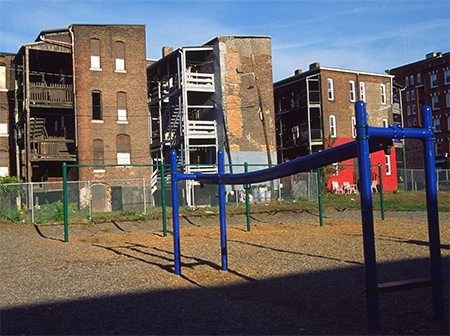Native Plant Conservation Campaign News: More green infrastructure and native plants extend life, strengthen immune systems in cities
December 1, 2020
 New studies continue to demonstrate the substantial benefits to physical and mental health that accrue from expanding urban green spaces, particularly using native plants (links to summaries of these studies are provided at the end of this article.)
New studies continue to demonstrate the substantial benefits to physical and mental health that accrue from expanding urban green spaces, particularly using native plants (links to summaries of these studies are provided at the end of this article.)A study published in October by the Natural Resources Institute of Finland showed that the health of the immune systems of children at daycare centers improved when the biological diversity at the centers was increased. Diversity was increased by simple measures such as adding forest undergrowth, turf and planter boxes to yards of urban daycare centers. Measurable improvements to children’s immune health were found after as little as one month.
Many studies had previously found that children who live in rural areas and are in contact with native plants and nature have a lower probability of developing immune system disorders such as asthma. This is the first time the phenomenon has been documented in urban daycare centers.
This research provides further support for the hygiene and biodiversity hypotheses. These theories state that children living in a more floristically and biologically diverse environment develop more robust immune systems. Their immune systems are strengthened through contact with the more diverse microorganisms that biodiverse environments support.
In another example involving urban parks, a report was published in November by the University of California Los Angeles in cooperation with the Prevention Institute fo Health Equity and an advisory board of community-based organizations. They found that high quality urban green spaces help people live longer. The study examined life expectancy in Los Angeles county neighborhoods with varying levels of access to well maintained parks and green infrastructure.
 The UCLA report found – unsurprisingly - that low income communities and communities of color have significantly lower access to green spaces and significantly lower life expectancy. High quality green spaces were found to be disproportionately located in wealthy neighborhoods.
The UCLA report found – unsurprisingly - that low income communities and communities of color have significantly lower access to green spaces and significantly lower life expectancy. High quality green spaces were found to be disproportionately located in wealthy neighborhoods.Key findings include:
- Over 50% of Los Angeles County’s 10 million residents live in neighborhoods that rank as “high park need” or “very high park need.” Most of these high-need areas are concentrated in low-income communities of color.
- Increasing park acreage in areas with park deficits and low levels of tree canopy has the potential to considerably increase life expectancy in those areas.
- If all the census tracts in LA County with park deficits and low tree canopy levels had an increase in park acreage up to the county’s median level, those census tracts could see a gain of approximately 164,700 years in life expectancy across the population.
Green infrastructure also of course sequesters millions of tons of carbon dioxide and other greenhouse gasses, as well as moderating local climates.
Relatively few studies of the effect of green spaces on public health specifically examine the impacts of native vs. nonnative plants. However, those that do report that locally adapted native plants are more effective at providing habitat for the diverse microorganisms that are most helpful to immune systems. Childhood immune systems are often particularly at risk in low income communities of color.
Also native plants provide other benefits such as habitat and corridors for local pollinators, songbirds and other wildlife as well as resilience in the face of storms, floods and other disasters.
- Read a summary of the Los Angeles urban parks study in the National Recreation and Parks Association magazine
- Read a summary of the Finnish daycare immune system study
- Read about the reduced mortality and substantial mental health benefits of green spaces and native plants in NPCC News
- Read more about the health benefits of native plants at the NPCC Ecosystem Services/Nature Based Solutions website
Photo: Daycare center garden, public domain; Park in a low income urban neighborhood © RAND Corporation